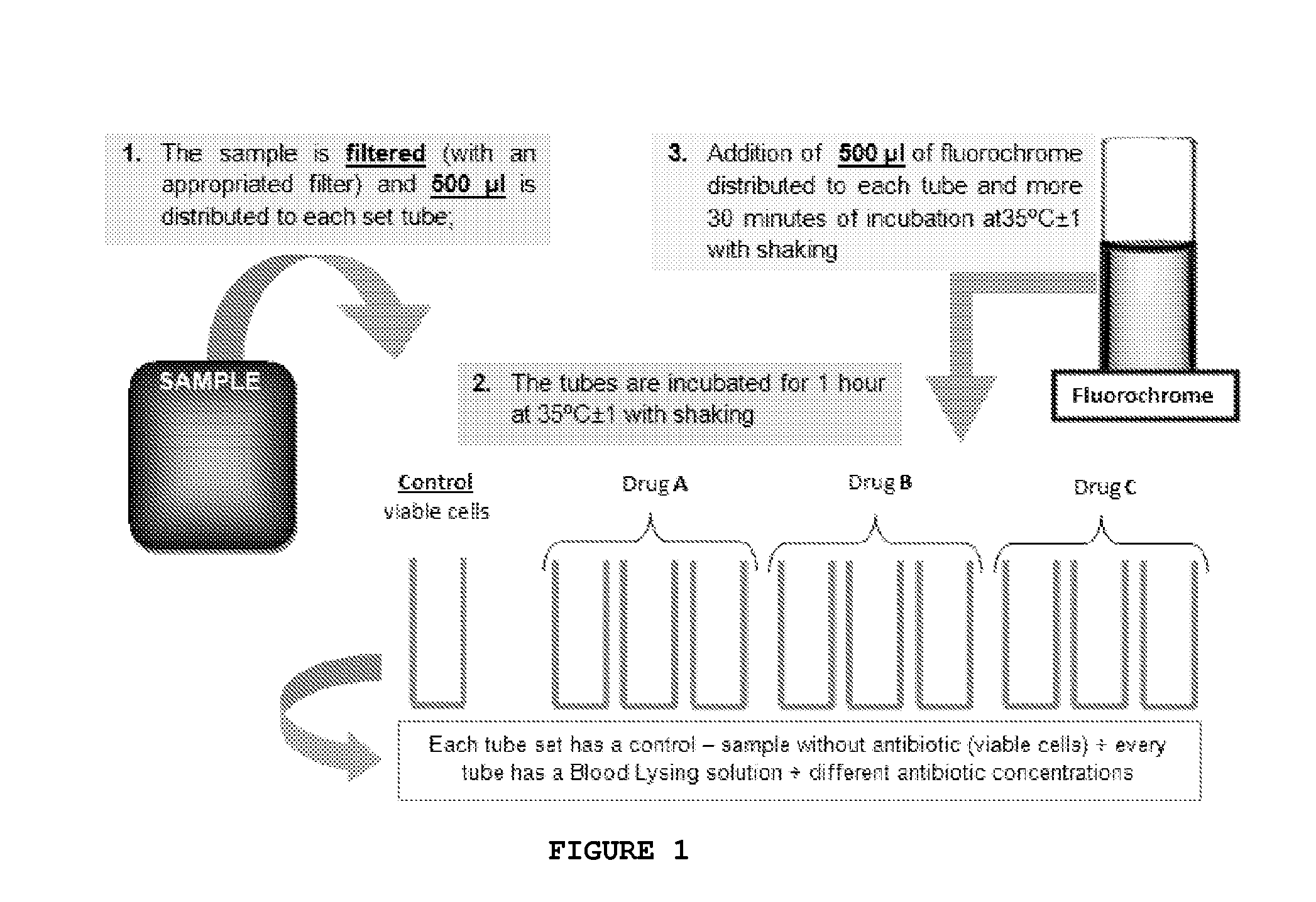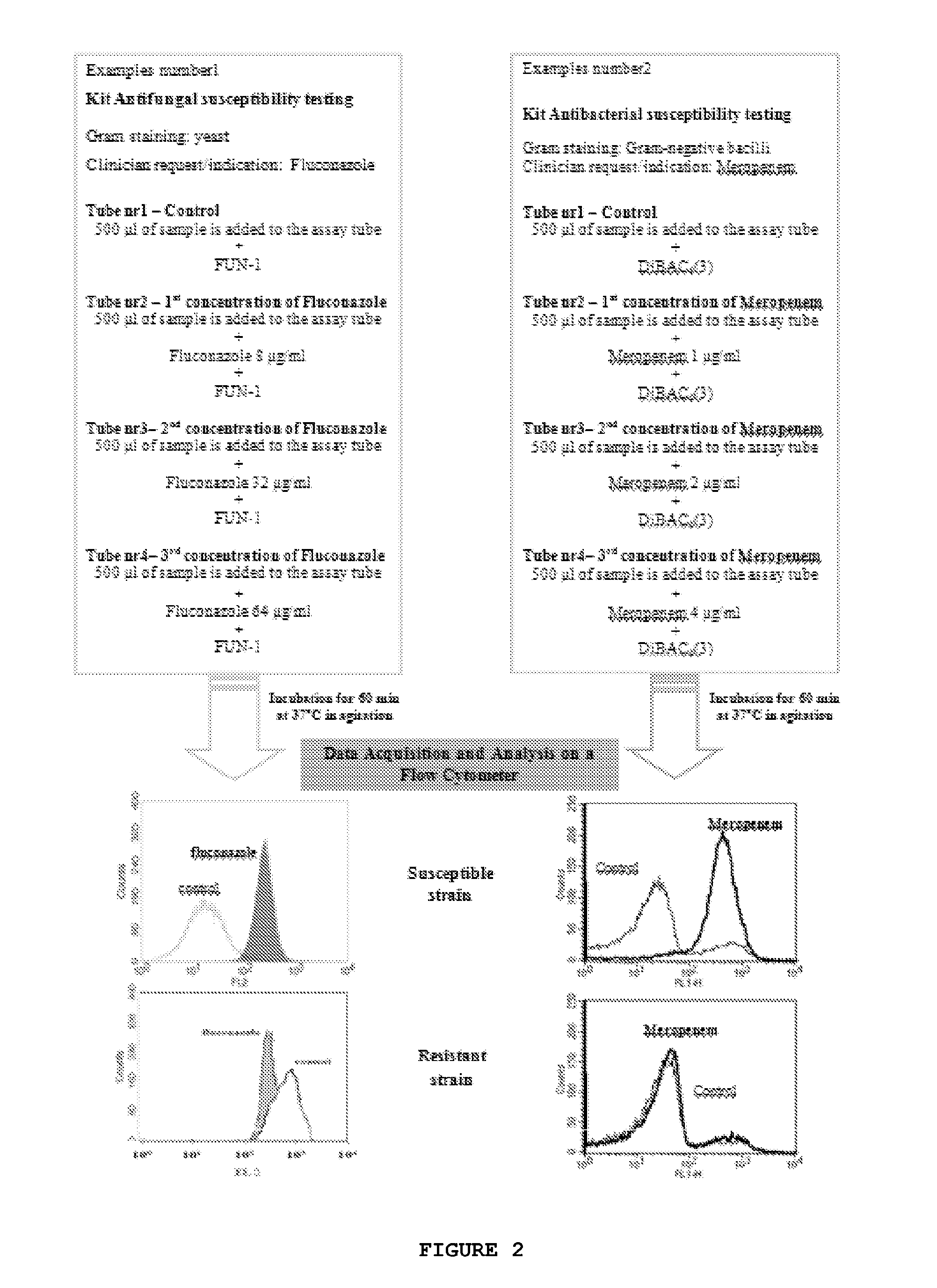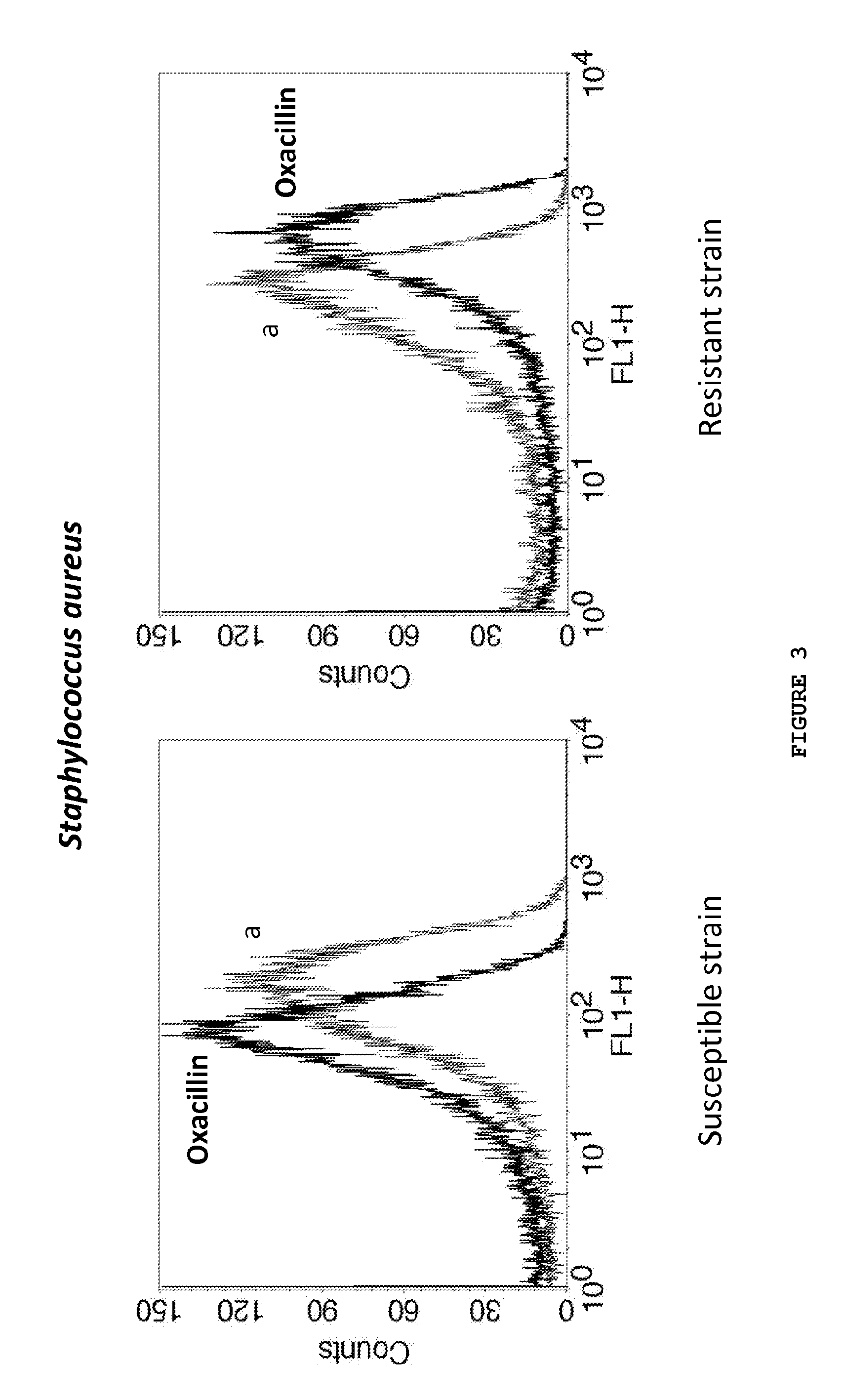Kit and method of detecting the resistant microorganisms to a therapeutic agent
a technology of resistant microorganisms and therapeutic agents, which is applied in the direction of biochemical apparatus and processes, specific use bioreactors/fermenters, and after-treatment of biomass, etc., can solve the problems of high cost, technology limitations, and inability to determine morphological lesions or physiological activity by classical methods, and achieve the effect of rapid lethal activity of drugs
- Summary
- Abstract
- Description
- Claims
- Application Information
AI Technical Summary
Benefits of technology
Problems solved by technology
Method used
Image
Examples
examples
[0090]The following examples provide preferred embodiments and should not be seen as limiting the scope of invention.
example no.1
Example No. 1
Escherichia coli Susceptibility Evaluation to Quinolones
[0091]Microbial agent: Escherichia coli [0092]Drug tested: Quinolone—ciprofloxacin[0093][2 breakpoint concentrations: 1 and 4 μg / ml][0094]Fluorochrome used: SYBR Green, a membrane permeant dye that binds to double stranded DNA structure.[0095]1. Distribute the bacteria suspension with the concentration of 106 cells per ml to serial of vials containing:[0096]Ciprofloxacin at 1 μg / ml;[0097]Ciprofloxacin at 4 μg / ml;[0098]Viable control (without ciprofloxacin).[0099]2. After thirty minutes of incubation at 35° C. and 150 strokes per minute, centrifuge the set of vials at 10000 rpm during five minutes.[0100]3. Add SYBR Green (prepared in TE, pH=7.5) at a final dilution of 1:100000 for 30 minutes in the dark.[0101]4. Perform Flow Cytometric acquisition at 530 / 30 nm—FL1;
[0102]compare the intensity of fluorescence of treated cells with non-treated cells.
Results Interpretation Criteria:
[0103]Ciprofloxacin acts by inhibiting...
example no.2
Example No. 2
Susceptibility Evaluation for Gram Negative Bacteria to Carbapenems
[0107]Microbial agent: Pseudomonas aeruginosa [0108]Drug tested: Carbapenems—Meropenem[0109][3 breakpoint concentrations: preferably 1, 2 or 4 μg / ml][0110]Fluorochrome used: Bis-(1,3-dibutylbarbituric acid) trimethine oxonol (DiBAC4(3)—a voltage sensitive lipophilic anion for the measurement of membrane potentials; depolarized cells show higher intensity of fluorescence while polarized cells show a lower value.[0111]1. Distribute the bacteria suspension with the concentration of 106 cells per ml to serial of vials containing:[0112]Meropenem at 1 μg / ml;[0113]Meropenem at 4 μg / ml;[0114]Viable control (without Meropenem)[0115]2. After thirty minutes of incubation at 35° C. and 150 strokes per minute, add DiBAC4(3) at a final concentration of 1 μg / ml for 30 minutes in the dark.[0116]3. Perform Flow Cytometric acquisition at 530 / 30 nm—FL1; compare the intensity of fluorescence of treated cells with non-treate...
PUM
| Property | Measurement | Unit |
|---|---|---|
| incubation time | aaaaa | aaaaa |
| incubation time | aaaaa | aaaaa |
| time | aaaaa | aaaaa |
Abstract
Description
Claims
Application Information
 Login to View More
Login to View More - R&D
- Intellectual Property
- Life Sciences
- Materials
- Tech Scout
- Unparalleled Data Quality
- Higher Quality Content
- 60% Fewer Hallucinations
Browse by: Latest US Patents, China's latest patents, Technical Efficacy Thesaurus, Application Domain, Technology Topic, Popular Technical Reports.
© 2025 PatSnap. All rights reserved.Legal|Privacy policy|Modern Slavery Act Transparency Statement|Sitemap|About US| Contact US: help@patsnap.com



